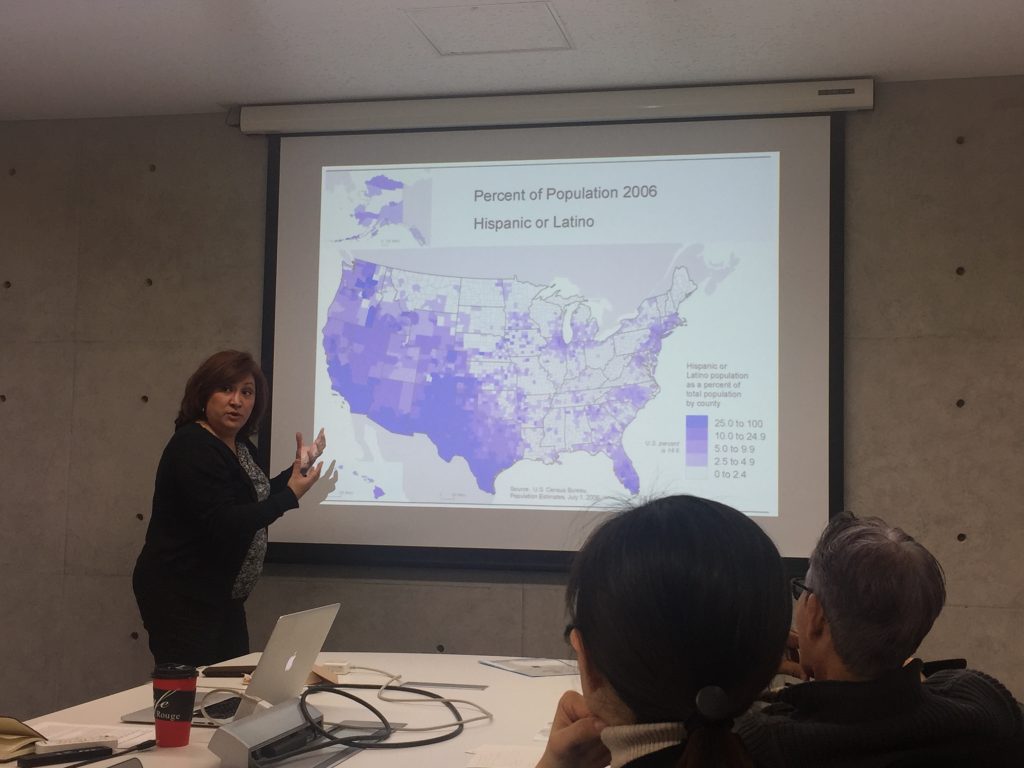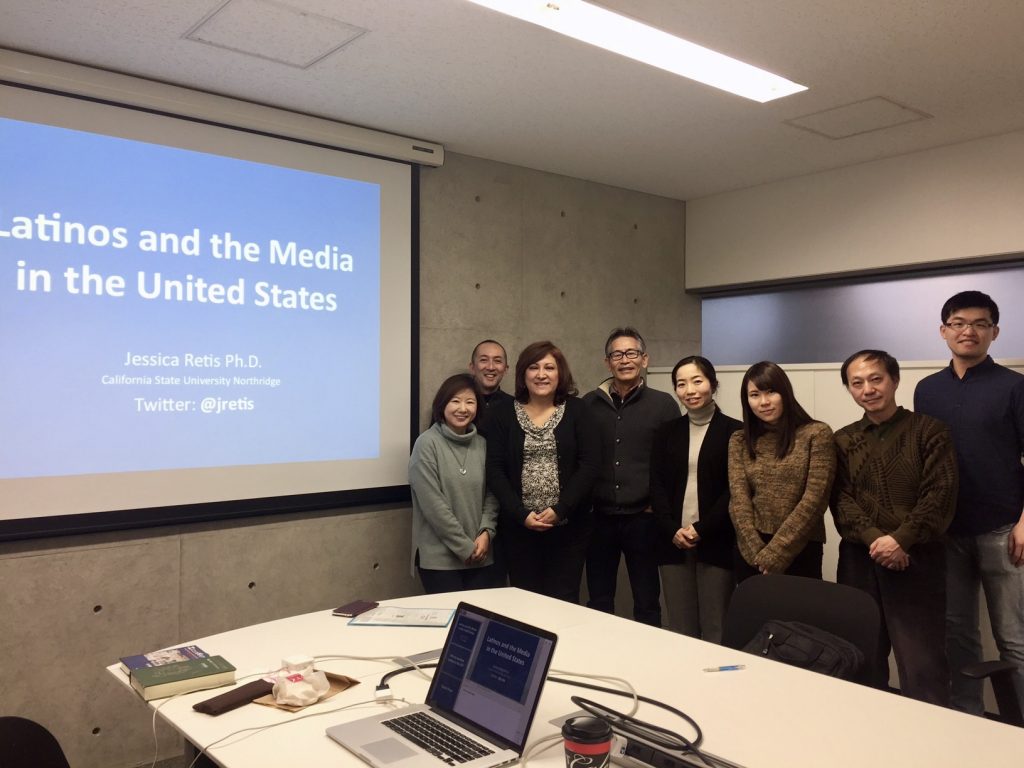Amid the increase of the Hispanic population in the United States over the past few decades, their ethnic media is facing many challenges due to the decline of readership and audiences among the younger generation, according to Professor Jessica Retis of the Department of Journalism at California State University, Northridge, who was the speaker of the latest Biotope Salon on January 19.
Professor Retis is a visiting scholar who is investigating the ethnic media of the Latinos in Japan, who mainly comprise of Brazilians and Peruvians who are descendants of Japanese immigrants in the late 19th and early 20th century.


During her presentation, titled “Latinos and the Media in the United States,” the professor introduced the background of the Latino population, which helped participants hold a general understanding of the diversity of the 55 million Hispanics in the U.S. and their media. By coincidence, the presentation came a day before the inauguration of the new president who has expressed taking a tough stance on immigration.
Professor Retis noted the importance of recognizing that Latinos are not a homogeneous community but is a mix of people from many different countries of origin. This is evident when looking at some Hispanic hub cities and the history of the flow of immigrants: New York has large communities of people from Puerto Rico and Dominican Republic, Florida’s Latino community comprise of Cubans, while Mexico is the motherland to those in California, Texas and other boarder states. Interestingly, over the past few decades, Latinos have spread geographically into many regions outside the hub regions. This trend, according to the professor, was due to the aging of local communities where Hispanics became their new labor force.
Although the Hispanic population is regarded as an important market, their presence is much smaller when it comes to political participation. Among the entire Latinos in the country, half of them are eligible voters but only half among them have actually cast their votes, which means that their voices are not necessarily represented, she said.
Meanwhile, the younger Latino generation is increasingly U.S.-born and do not necessarily have strong command of Spanish as they integrate themselves to the American society. Unlike the elder generation who only speak Spanish, the younger Latinos, especially the upper and middle class audiences, will rely more on the mainstream English language media, even though they also reach out to Hispanics in Spanish language. In addition, the fact that more people rely on social media as major source of information is a challenge for media organizations who are suffering from decline in readership – a trend observed globally. Radio continues to be a strong media among Hispanics, but the most popular programs are on music and entertainment, which means that some Latinos may have very limited access to news, the professor noted. Under these diverse and changing conditions of the Hispanic population, the Spanish language media needs to think hard on who their audiences are and what their agenda is, she said.
The 2016 Presidential Election saw more Latinos cast their votes compared to previous elections. A survey showed that while immigration issues have been one of their largest interests but the Latino voters were actually most interested in the economy. Education and health care issues were also of major concern among them.
But when Professor Retis and her students analyzed the media’s presidential campaign coverage, she said it became clear that both mainstream and Hispanic media reported heavily on Trump’s characters and his rhetoric on Twitter than actual political issues that needed to be discussed. The findings seemed to indicate the need for the media to think harder on what it should do to serve the public at a time when the new presidency is raising its attacks on the press.

(Setsuko Kamiya: MA student of GSII)